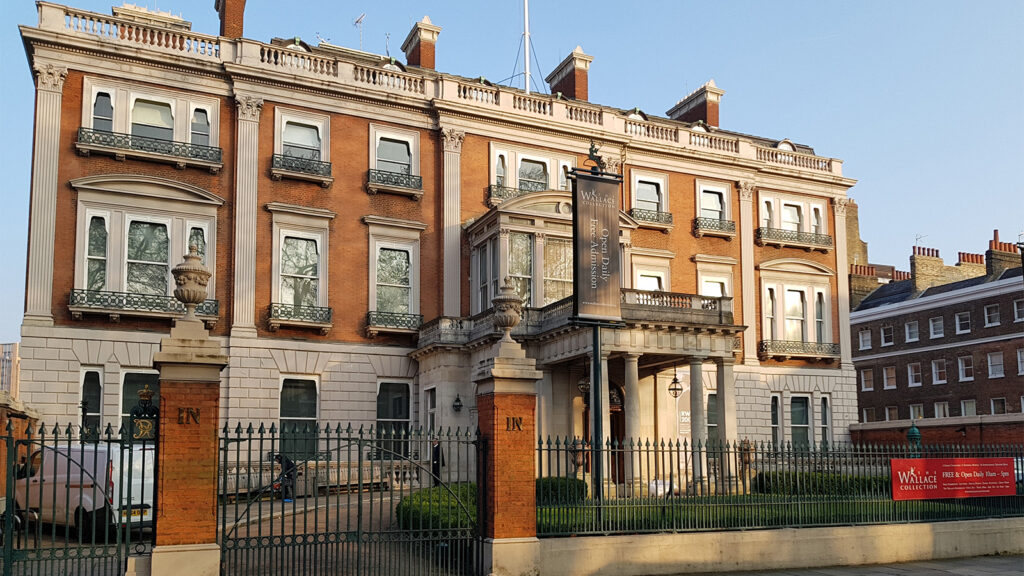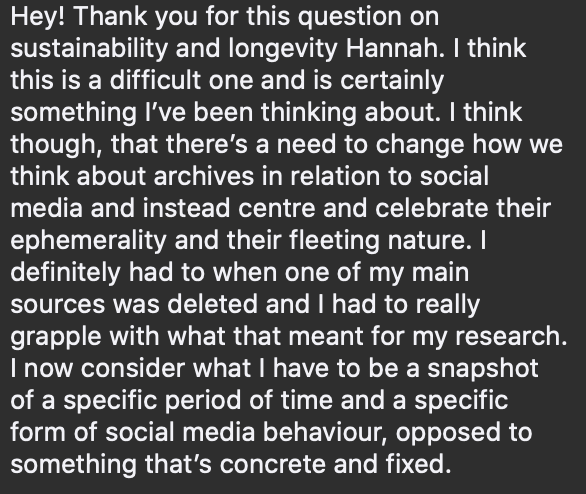Summary of thinking
In this rather tumultuous world I think that this CDA currently addresses three points of change: the digital invasion, the history review and collaboration fever. When I refer to the digital invasion I am specifically talking about the digital’s influence in the GLAM sector, which pre-pandemic was already making its mark through pressure to digitise collections but now has had a rather large boost due to many of the brick-and-mortar buildings being closed for long periods of time causing institutions to move everything online including exhibitions. The second point of change encompasses several discussions people are having about how we represent our history today. Contemporary issues, like the Black Lives Matter movement, the #metoo movement and climate change have caused people to demand a review on how we represent the past, wishing for it to be more inclusive and better reflect the stories of minorities. The final point of change, collaboration fever, addresses the increasing interest in interdisciplinary projects both in- and outside academia.
Within each of these points of change there are conflicts, clashes and collisions that are happening. These often take place around the symbols and languages we used to communicate in each sphere. For example in the digital invasion we can find a clash between the symbols and languages used by the digital realm and the archival realm. Where the digital is fast and shiny, the archive is slow and dusty. When searching the digital the user relies on pre-inputted keywords while archival searching relies on the creative knowledge of the archivists. What each sphere returns from a search is also in opposition; the order digital list versus the somewhat messy archive box of stuff. Here I believe the challenge is to soften and slow down the invasion of the digital as I am pessimistic that it will be able cure all the problems that brick-and-mortar archives presently experience.
The conflict found in the history review is clearly based around the symbols and language we use to discuss our history and what affect it has on modern society. Where one sees a symbol of the Great British Empire another sees a symbol of the slave trade. Where one generation sees coal as a symbol of a way of life that was destroyed, another views it as a symbol of pollution and an unsustainable industry. The problem here is that currently people approach this discussion in two very extreme ways; either they ignore it completely or they turn it into a war of identity. The challenge inside this point of change is to create a space for a more nuanced discussion.
The clashes that happen within the last point of change I have experience first hand many times. Every field of research has its own accompany culture, language and habits. When people collaborate across disciplines they bring this baggage with them. This can lead to clashes and confusion as symbols can mean completely different things in different fields. However, this clash of cultures is not the only problem within this point that I am concerned about. My biggest qualm with this point, and why I refer to it as collaboration ‘fever’, is that there is a growing romanticism around the language used in the area of collaborative projects. The gimmicky jargon, the token gestures and the ritualistic methods can, in my opinion flatten, and mute the collaborative process. This is an issue that is being picked up on by different people in the field of design. They are critical of how people are packaging their ‘methods’ into toolkits and selling them on to non-designers, which reduces the process into a tick-boxing exercise instead of a critical, thoughtful and difficult collaborative process.
So how do we tackle the challenges within each of these points of change? My current proposal is replacing these clashes of cultures and frustrating discussions with dialogue. In his book On Dialogue David Bohm describes discussion as a game on ping-pong where the focus is on defending ones truths against another’s. In contrast dialogue is focussed on creating a collective culture and an overall shared meaning. I imagine that creating this collective culture is far more sustainable for our points of change than the current discussions that are happening.
In case of our first point of change dialogue can be used to slow down the invasion of the digital. Where currently the digital is imposing its culture onto the archive, through search bars and keywords, dialogue offers the opportunity for the culture of the archive to inform the digital. Having this exchange of ideas instead of one field dictating to another opens the door to creating new creative technologies, rather than having this constant battle between cultures. We instead create a new set of cyborg symbols and languages, that in addition offers the opportunity to make both areas more inclusive. Where currently the digital sphere is for nerdy techies and the archive is for nerdy academics we can create a new space for all nerds.
Transforming heritage sites into places of dialogue is already happening with ventures like the International Coalition of Sites of Conscience founded by Liz Ševčenko. In her paper on the subject of the Sites of Conscience, Ševčenko emphasise the need to implement dialogue into the management of heritage sites as a way to not suppress conflict but instead view it as something that should be “embraced as an ongoing opportunity.” This should be one of the targets in order to make it sustainable beyond the timescale of the project.
The role that dialogue can play within collaboration fever is creating a space where we are aware of each person’s cultural baggage, but also make a space where we constantly question the process of collaboration. Hopefully we will then we able to harvest a more holistic picture of the collaborative process rather patting ourselves on the back for completing certain tasks and achieving specific outcomes.
So how do we create a sustainable dialogue that address all three points of change? Currently my suggestion is make things, together, all the time. In my opinion we should make things because it makes the dialogue more tangible and easier for those who were not there to understand the thought process. It also causes people to buy into the process more, make them feel like they are part of something and are being heard. This making needs to be constant, because every time we make something it is essential that we reflect on it in order to fully understand the process and avoid this project becoming an exercise in ticking boxes.
Now there comes a point where we need to capture this ongoing process. At the end of the three years we can show the results of our making in a conclusive way through an exhibition or oral history project or an archive. However, it is of utmost importance, as I have previously touched upon, that we analyse this constant collaborative making in a way that allows it to live beyond the three years of this project. Otherwise all the preaching about sustainable dialogue is completely undermined.
To summaries this project deals with three points of change: the invasion of the digital into the GLAM sector, the conversation surrounding changing attitudes to our past and the increasing interest in collaborative work. Each of these points of change have areas of conflict based around symbols and language that in my opinion can be combated by creating a sustainable dialogue through constant collaborative making. Hopefully this process will result into something that lives beyond the time limit of this project and can be adopted by other parties who wish to embark on a similar venture in the future.

